What do we know about the latest archaeological discoveries in Abbey Fields?
By Robin Leach 16th Apr 2023
By Robin Leach 16th Apr 2023

From 1840 to 1922, numerous major excavations took place in the Abbey Fields that added greatly to our knowledge of the Abbey and its layout.
They were carried out due to extensions of the St Nicholas churchyard and for the employment of returning Great War veterans.
Subsequent explorations have been on a much smaller scale and despite all the effort some buildings are 'missing' from what would be expected at an Abbey complex, and the swimming pool is the suspected location for one – the Abbey Mill.
Disappointingly, no archaeological finds were recorded during major work on the swimming pool site in 1895/6 (construction of the original pool), 1935 (reconstruction into the 'lido'), 1965 (new changing rooms) and 1985 (the indoor pool), and so expectations of major discoveries were perhaps not too high as the recent excavations began in the summer of 2022.
However, the swimming pool was to provide the best Abbey archaeology revealed for a century.
Work had hardly begun in the summer of 2022 when the first discovery was made; underneath the 1935 terracing at the brook end, on top of which had stood changing rooms, a sandstone wall was found.
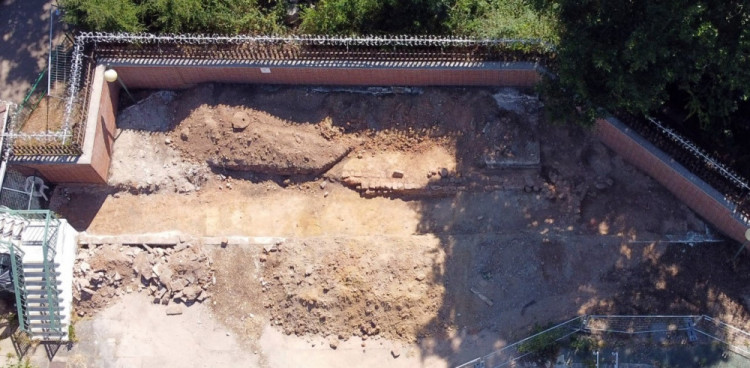
This comprised two rows of stones, close together perhaps a foot apart, with smooth surfaces facing each other.
It appears to be a water channel but is set high in the ground, perhaps four or five feet above today's normal level of the brook.
Was this part of the Abbey Mill? It currently seems unlikely.
Nearby an explorative pit revealed evidence of burning with slag at the bottom, suggesting metalwork of some sort may have been carried out on the site.
Medieval is the suggested date for both.
At about the same time, more finds were made outside the pool area when a test pit was dug near the zip-wire in the children's play area for the proposed new sub-station.
Part of a circular stone formation was found close to the surface, and a stone floor and a wall was uncovered about two or three feet below.
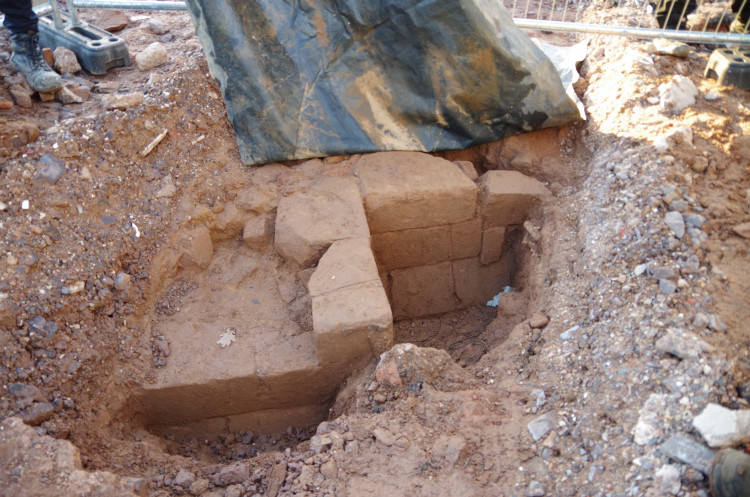
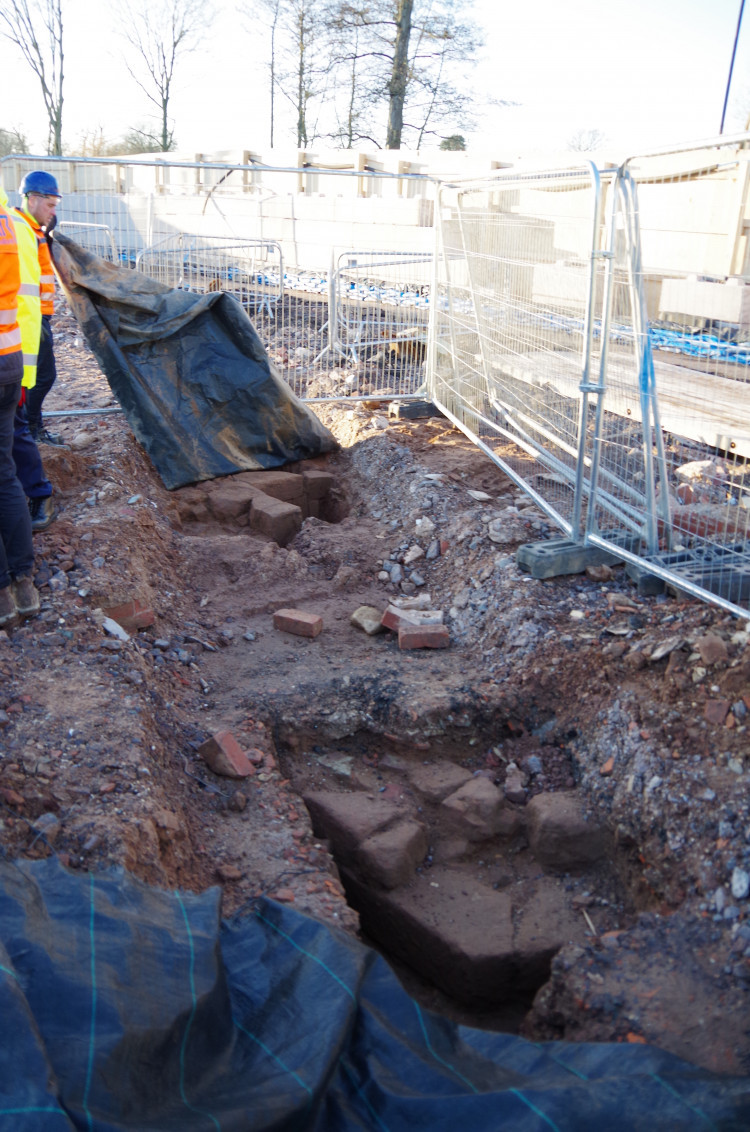
The former is shown on some 20th century maps, and even appears in a 1947 photograph; it is likely to be connected with early play equipment, or maybe a botanical enclosure.
The floor however has again been dated as medieval.
A discovery in January 2023 went a little under the radar.
When the outdoor pool area was being cleared, remnants of the original 1895/6 pool were revealed.
The construction of this pool is of course the raison d'etre of all subsequent development on the site.
Visible were parts of one of the side walls complete with glazed bricks. Also, the probable original floor could be seen, an asphalt surface above gravel.
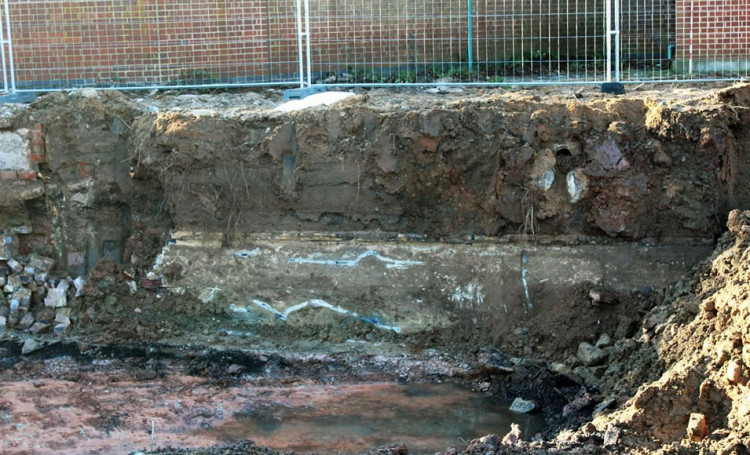
Due to water pressure, the 1935 pool was constructed several feet higher in the ground than the 1896, and this author had for a dozen years or more suggested parts of the original pool might lay beneath it; how pleasing to discover I was right!
Then of course came the major discovery of high quality medieval walls underneath the former café area.
They form part of what is thought to be a domestic rather than industrial building, and has later added external walls and gravel yard surfaces at different levels. Subterranean archways have been found too, perhaps part of a sewer or water system.
Some of the stonework's mason's marks correspond to others on the Barn and at the castle. What is obvious is that these particular remnants were cut through and partly destroyed by the contractors when building the indoor pool in 1985, and yet no one is aware of any reports of discoveries at the time.
Finally, as reported at the Kenilworth Town Council meeting last week, there has been another recent discovery; these are medieval walls underneath the men's changing area. Details will no doubt come later.
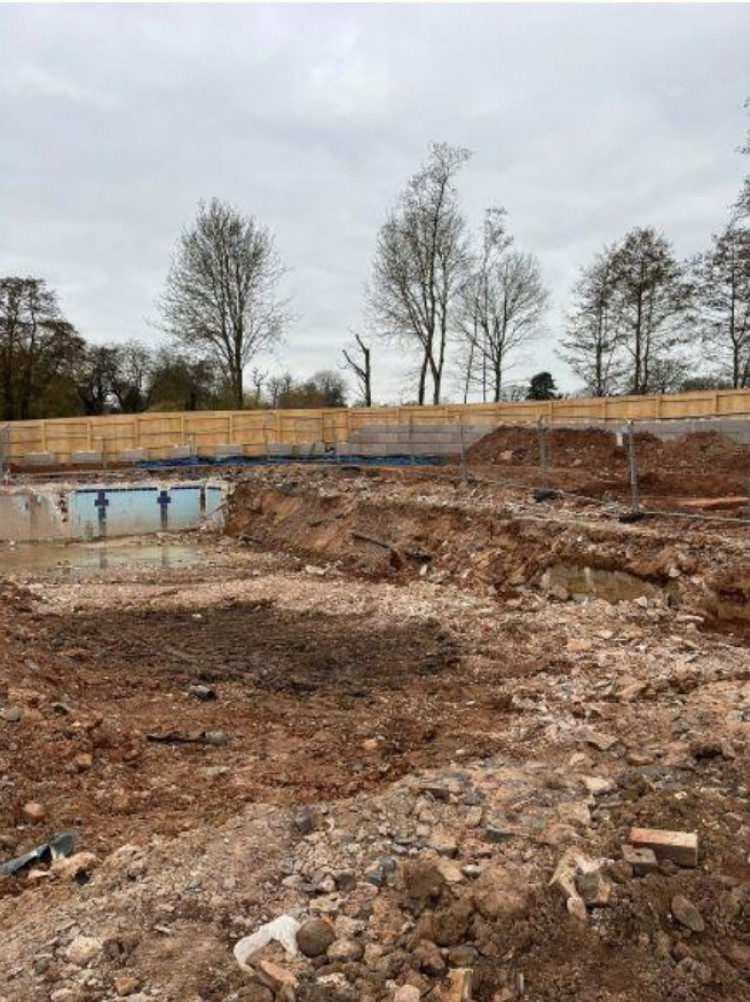
The archaeologist's work is not over. When the 1985 boundary wall at the brook end is demolished, further explorations will take place, including investigating the rough wall alongside the brook.
Will evidence of a mill, and an explanation for the double row of stones, be uncovered?
All this means that the construction of the new facilities is being reassessed to impact the archaeology as little as possible.
The high quality walls under the café area has meant a probable relocation of piles for the forthcoming construction work; the rows of stones at the brook end are fragile and unlikely to survive.
A further problem is that several of the huge and deep concrete blocks that hold the cut-down vertical support girders are in very close proximity to the archaeology and, I was told, will be a 'nightmare' to deal with.
Finding a balance between investigations, preservation, construction, costs and time is not a task to be envied.
This swimming pool rebuild has provided the most extensive Abbey investigation in a century; who knows when anything on this scale will happen again.
The archaeologists final report will make fascinating reading. Further details of all archaeological work in the park can be found online here.
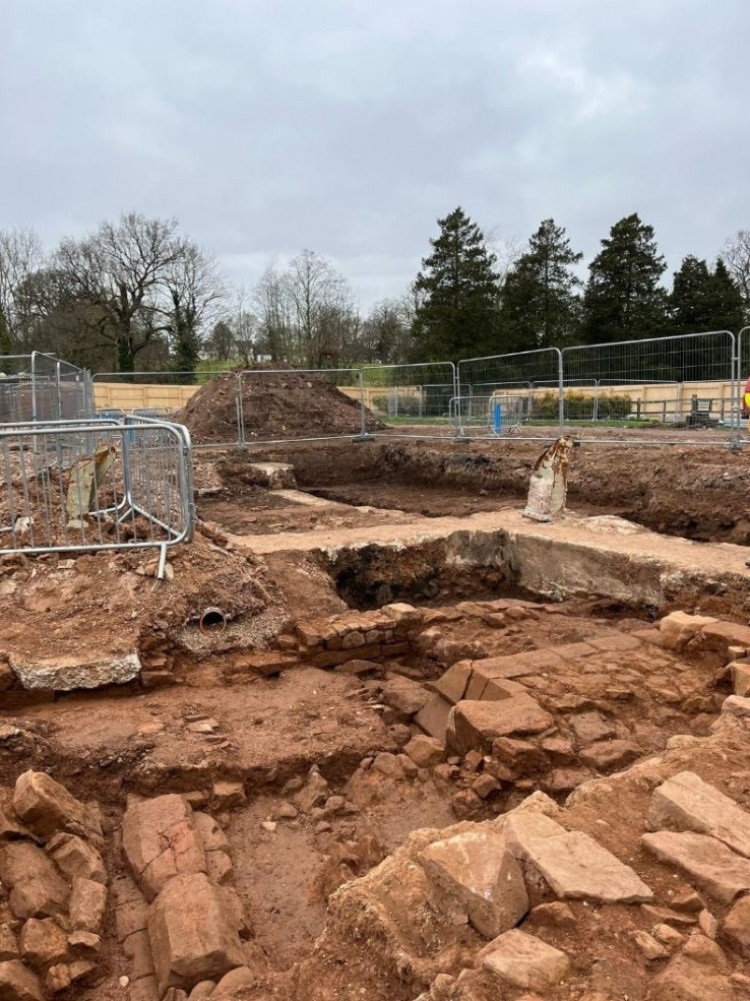
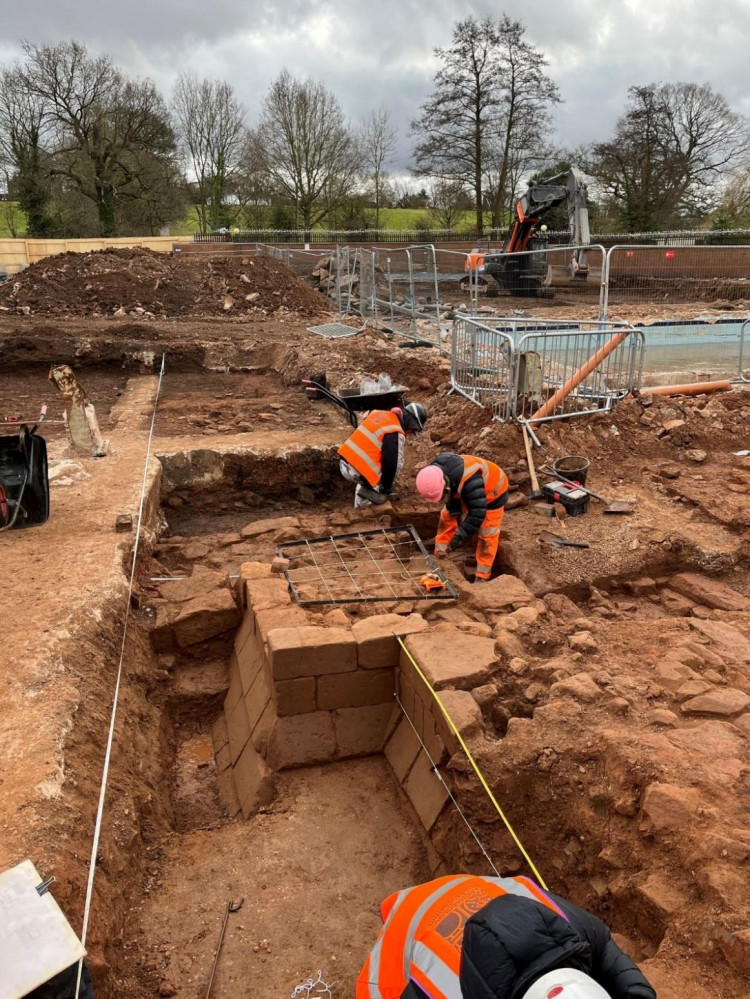
CHECK OUT OUR Jobs Section HERE!
kenilworth vacancies updated hourly!
Click here to see more: kenilworth jobs
Share:


























